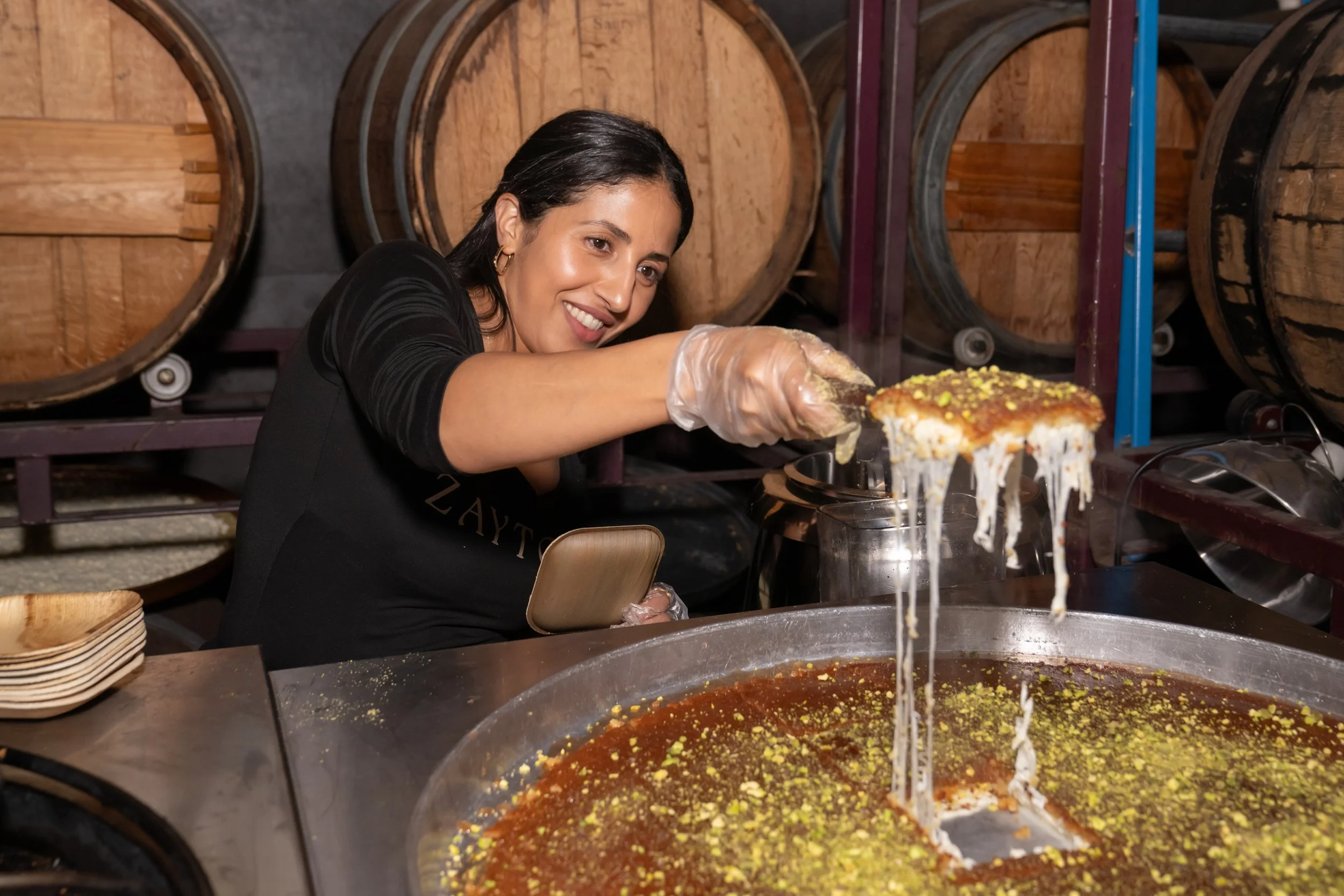Food Motifs in Tatreez
The following was originally published in the print and digital Deluxe Food Edition. Order a print or digital copy to support the only Palestinian magazine in the United States.
Tatreez, the Arabic word for embroidery, is a millenia-old practice in Palestine. Tatreez is not just an art form but a language, one that is made of motifs. One can think of a motif as a word and the combination of them as a story. And with tatreez, Palestinian women have always narrated their lives, traumas, desires, and hopes.Tatreez is a way to identify someone and a way for someone to declare themselves, and with food motifs, we declare our indigeneity to the land of Palestine by displaying our intimate knowledge and relationship with it. Israel has waged a constant war against symbols of national pride for Palestinians, like banning the flag. That led to people displaying the colors by drawing, eating, and yes — stitching — watermelons. There are many tools used in the resistance and one has to get creative when the occupation allows so little. Tatreez is a way to regain autonomy and display messages of resistance and Palestinian pride. In Gaza, people have shaved down cans of food rations for makeshift needles and created thread from recycled clothes.
With tatreez, we can tell the ingredients Palestinian women grew up with in their villages, we can tell their favorite foods, we can tell which crops hold special significance to them, like pomegranates, cauliflower, corn, berries, and chickpeas and raisins.
To learn more, I interviewed two tatreez artists who lived in Palestine and learned tatreez from their female relatives — Saida Mizyed and Nibal Abdelsalam. For both women, tatreez was an intimate practice done with loved ones and they continue to embroider and tell their stories through tatreez.
Olive Trees and Protection
Olive oil is integral to Palestinian culture and resistance, used in our daily life as well as our celebrations and rituals. Just like tatreez, many of our olive trees have existed for millenia — our ancient protectors. For Abdelsalam, olive trees don’t just recall memories of the harvest, but of being protected. During the Second Intifada, Abdelsalam, her mother, and her siblings were in a playground when they heard gunshots nearby, and her mother gathered all the children and hid in a nearby field, beneath dozens of olive trees, until the danger passed. To this day, Abdelsalam’s favorite tatreez motif is the olive tree.
Wheat and How Colonization Endangers Traditional Recipes
For Mizyed, tatreez and food are both sources of comfort and a means of living on and through the land. The traditional lifestyle of Palestinians was rooted in sustainability which is vastly different from the mass production and overconsumption we see in the west. Palestinians lived on the land, cared for it, and survived off of its crops. The wheat motif is commonly found in Palestinian embroidery and as Mizyed notes, this is because in Palestinian cuisine, grains such as wheat were historically eaten until the British brought imported rice. Mizyed tells me that “jreisheh is an old Palestinian dish that was made of a grain-like rice served with any animal protein and is almost extinct now.”
Grape Leaves and Connection to the Land
Grapes are central to Palestinian agriculture, specifically in the southern region of Al-Khalil, which is why tatreez from that region tends to feature a lot of grapes. We eat them rolled and stuffed, and in a dessert called ‘khabisa’ made of wheat flour, grapes and other ingredients — it is almost like a pudding. Because they are so important in our culture, many Palestinians can spot a grape tree anywhere because we saw our mothers and grandmothers stopping on the side of the road to pick these leaves, or helped them fill and roll grape leaves for a meal.
A few months ago, in Chicago’s Little Palestine, I saw an elderly Palestinian woman reaching as high as she could to pick grape leaves in a small parking lot. In Arabic, I asked her if they were any good and she said, “They’re nothing like the leaves back home, but they’ll do.” My mother and grandmother do the same here. If they recognize an opportunity to pick grape leaves, they won’t hesitate. While this woman in Little Palestine was steps away from a Palestinian grocery store that sold jarred grape leaves, she chose to pick them herself. Connection to the land is our second nature even if we live in a country where we are so disconnected from our own land.
Mizyed expresses how she tries her best to live sustainably despite how far removed we are as consumers from the journey our food takes to get to our tables. She says, “We are alienated here in the west from the food we consume but it’s so different in Palestine. We grow our own produce and of the foods we enjoy that we don’t grow, we know who grows it and where it’s grown.”
Akoob and Persistence
Mizyed told me about akoob, which is a vegetable that has a very short harvest window and is enjoyed only seasonally. It has thorns and is tedious to harvest, find, prepare, and cook. This seasonal delicacy is one of Mizyed’s favorite dishes and also one of her favorite tatreez motifs. Her mother prepares akoob in a yogurt sauce made of jmeed/kishik which is a dry yogurt made from goat’s milk. She tells me “My mom would save her best chishich [falahi dialect for kishik] for the akoob season and it would make the dish even better.” On preparing akoob and tatreez, Mizyed says “both preparing akoob and stitching tatreez are time consuming, but they are a testament that we work hard for the things we love.”
Mulberry Trees and Memories
Tatreez holds countless memories for Palestinian women. Running their hands over stitches and seeing the motifs can help them remember all the details of their life, bringing up memories of family, love, and food. Mizyed told me about the mulberry tree her late grandmother had in front of her house. Everyone in their village loved the mulberries that tree would bring forth when it was in season. Her grandmother intentionally would keep her gate open to any passerby wanting some. When Mizyed sees the mulberry motif now or stitches it herself, memories of her grandmother, the shape of this tree, and the colors and taste all come back.
As Israel burns our libraries and murders the keepers of our cultural knowledge, as recipes are threatened, and our entire people are under attack, we must remember that in tatreez, we have a method of documentation as resistance. With food motifs, we can preserve feelings, stories, knowledge about crops, even entire recipes. If we fail to recognize the value of tatreez, future generations might lose their access to this integral part of Palestinian identity and resistance. For me, learning tatreez isn’t a choice but an obligation. It is my way of reclaiming my story and my land, and keeping the line of our stories unbroken.
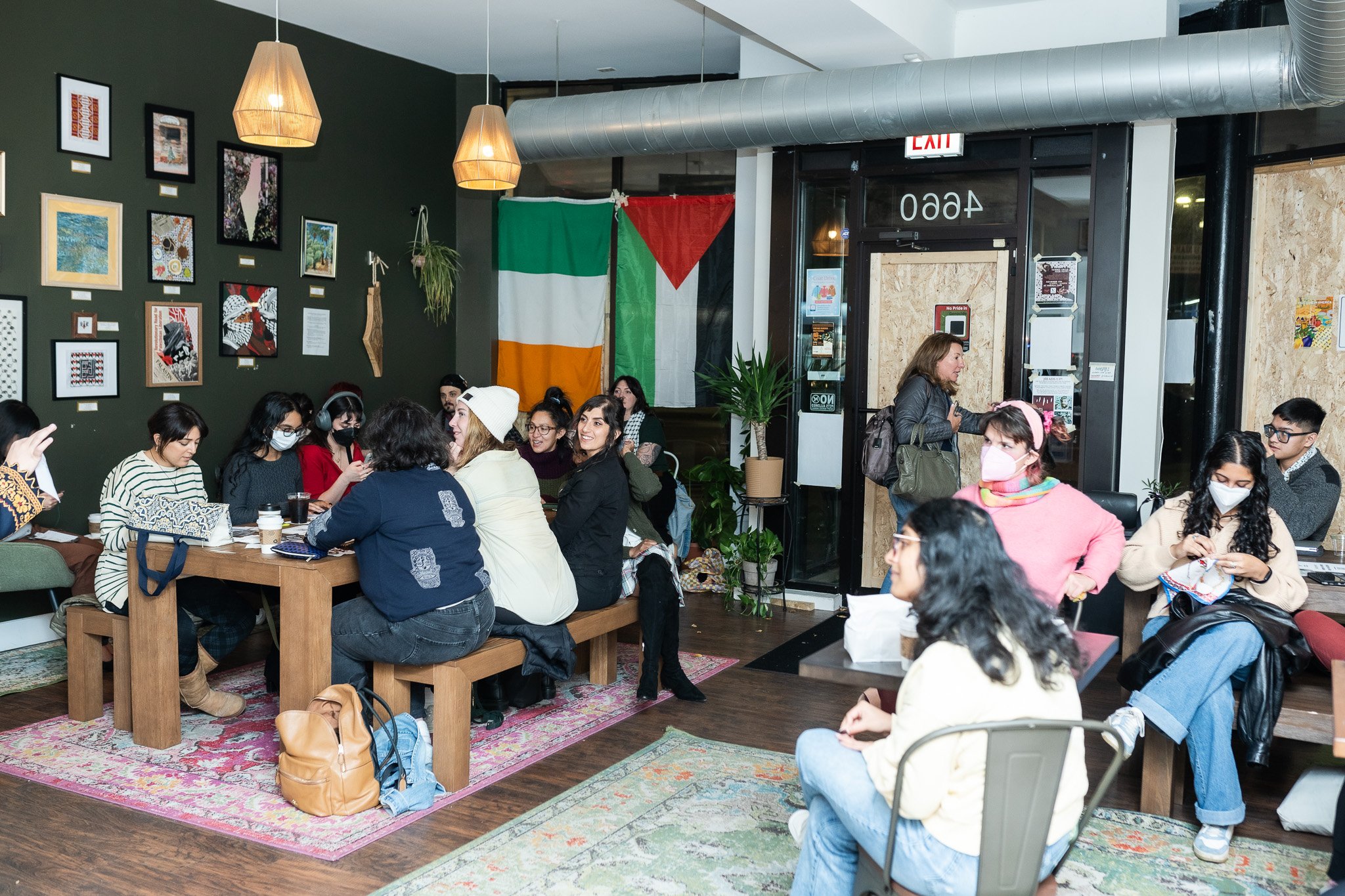
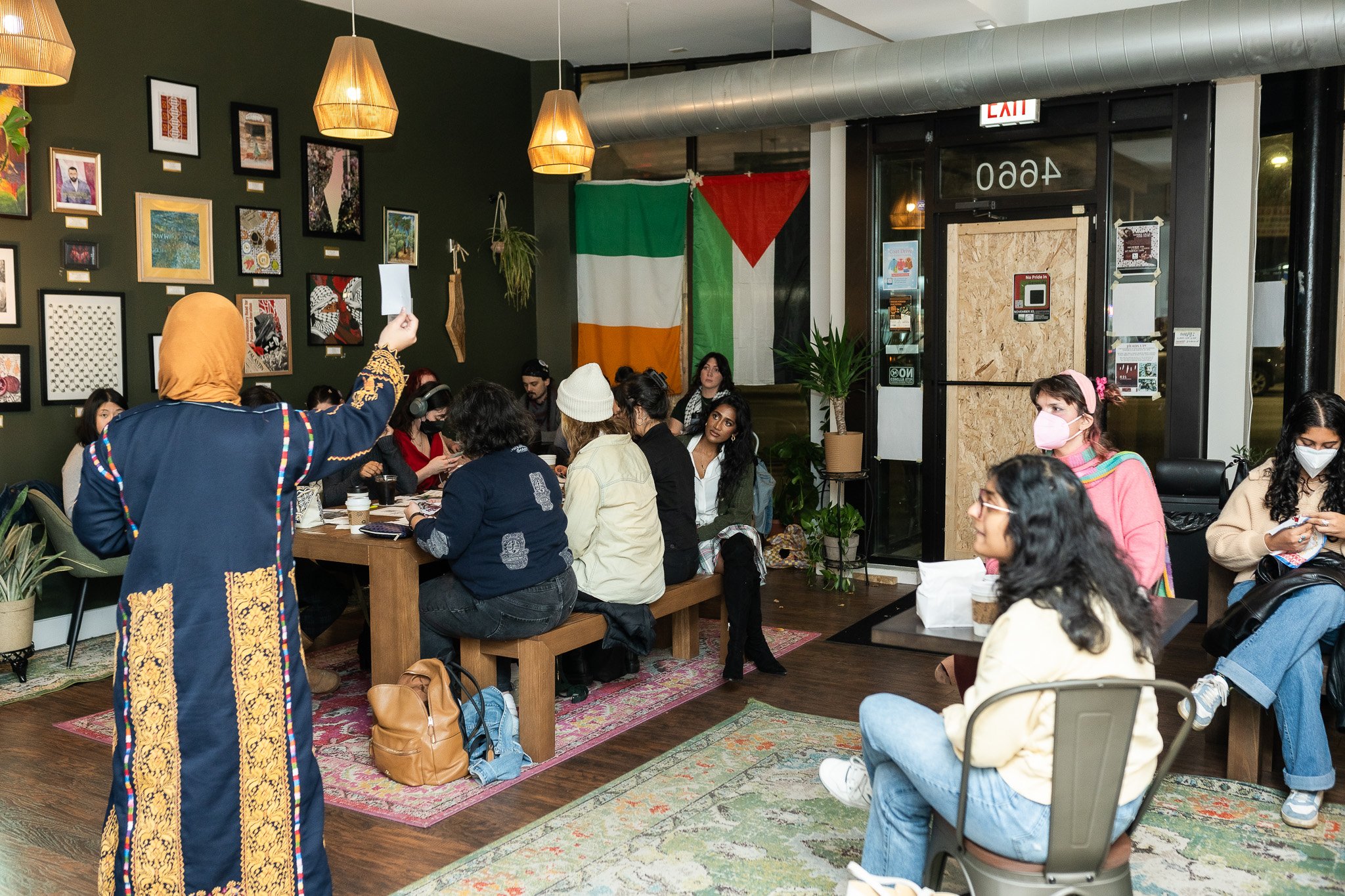
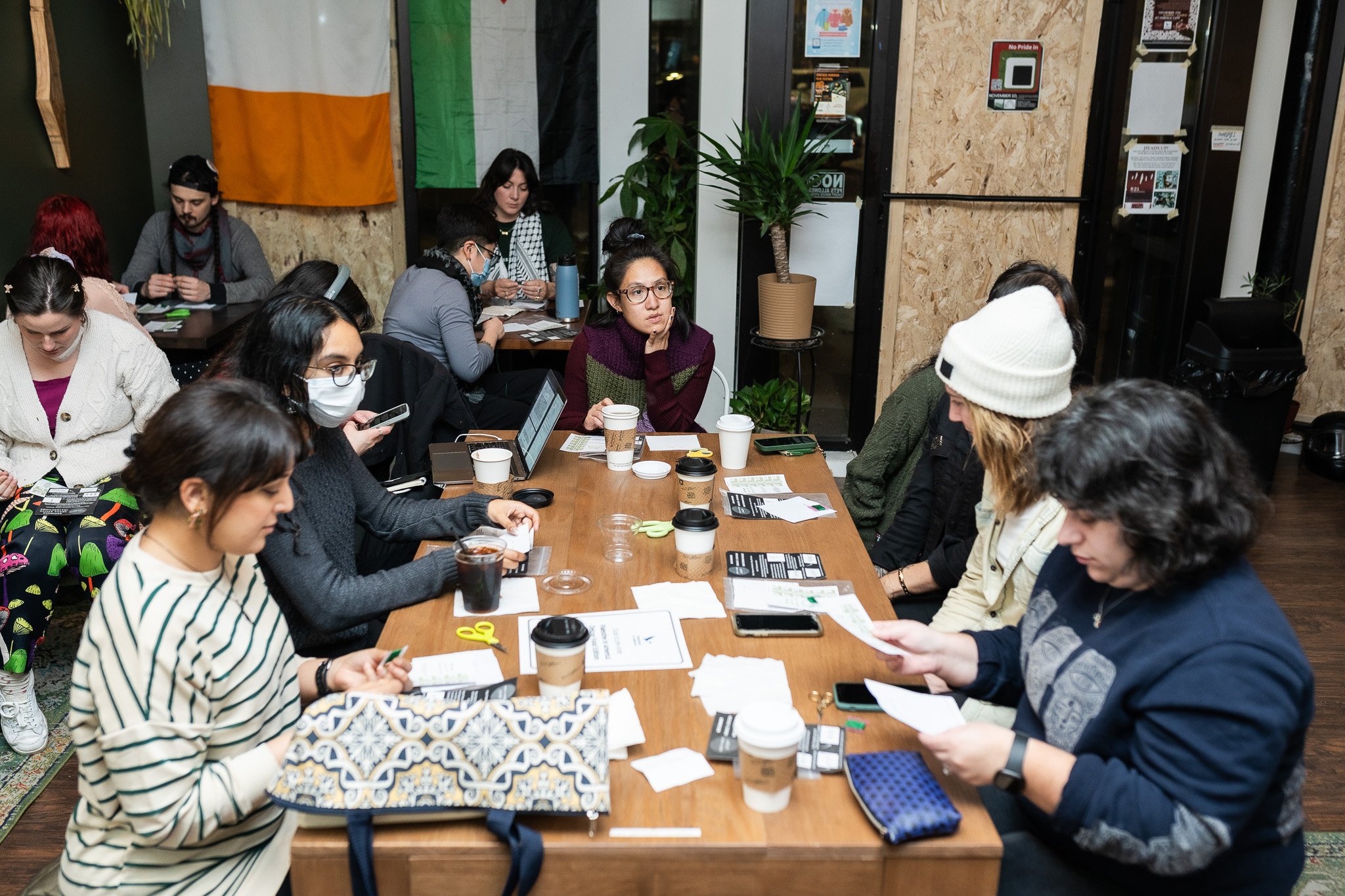
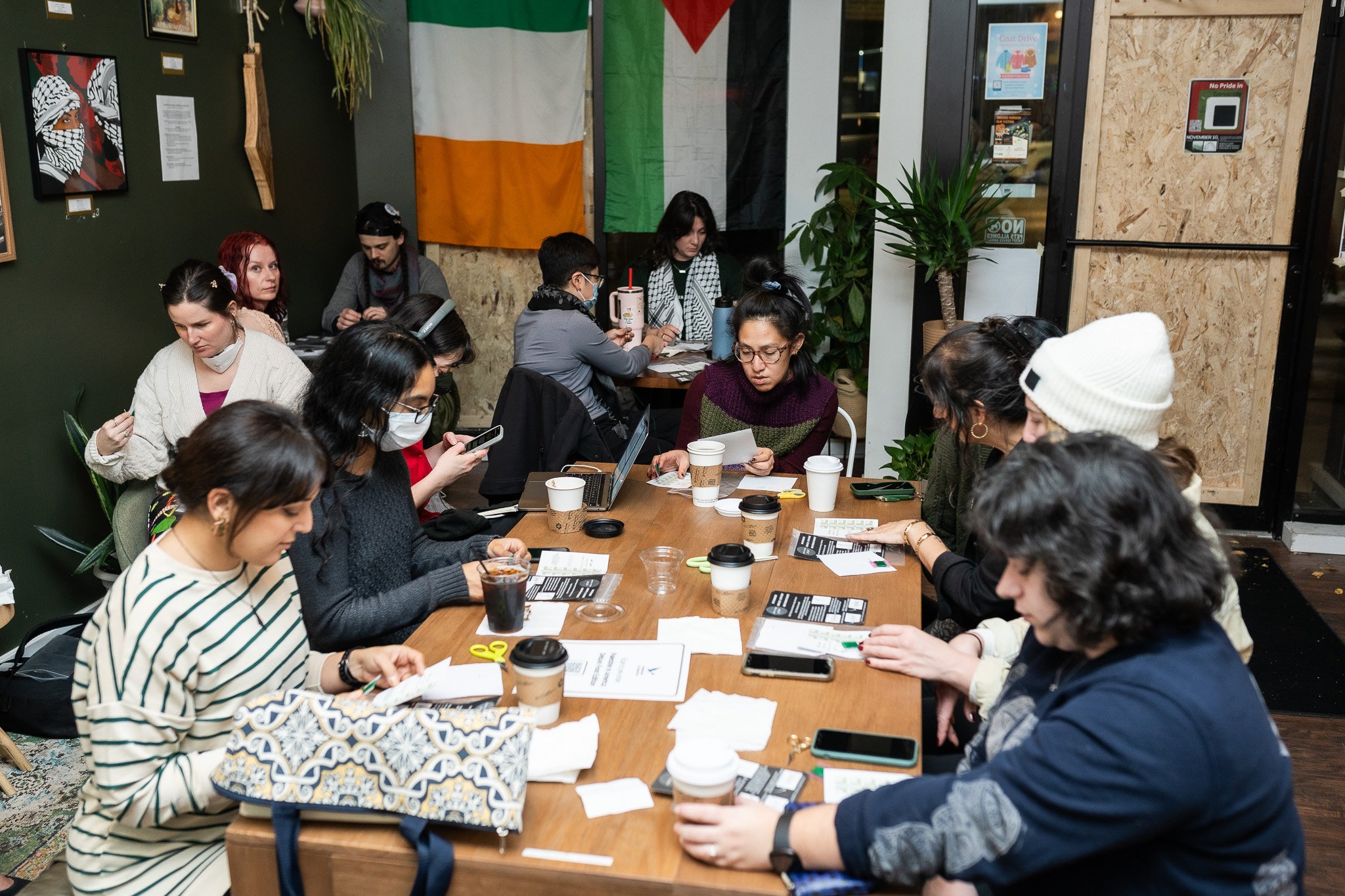
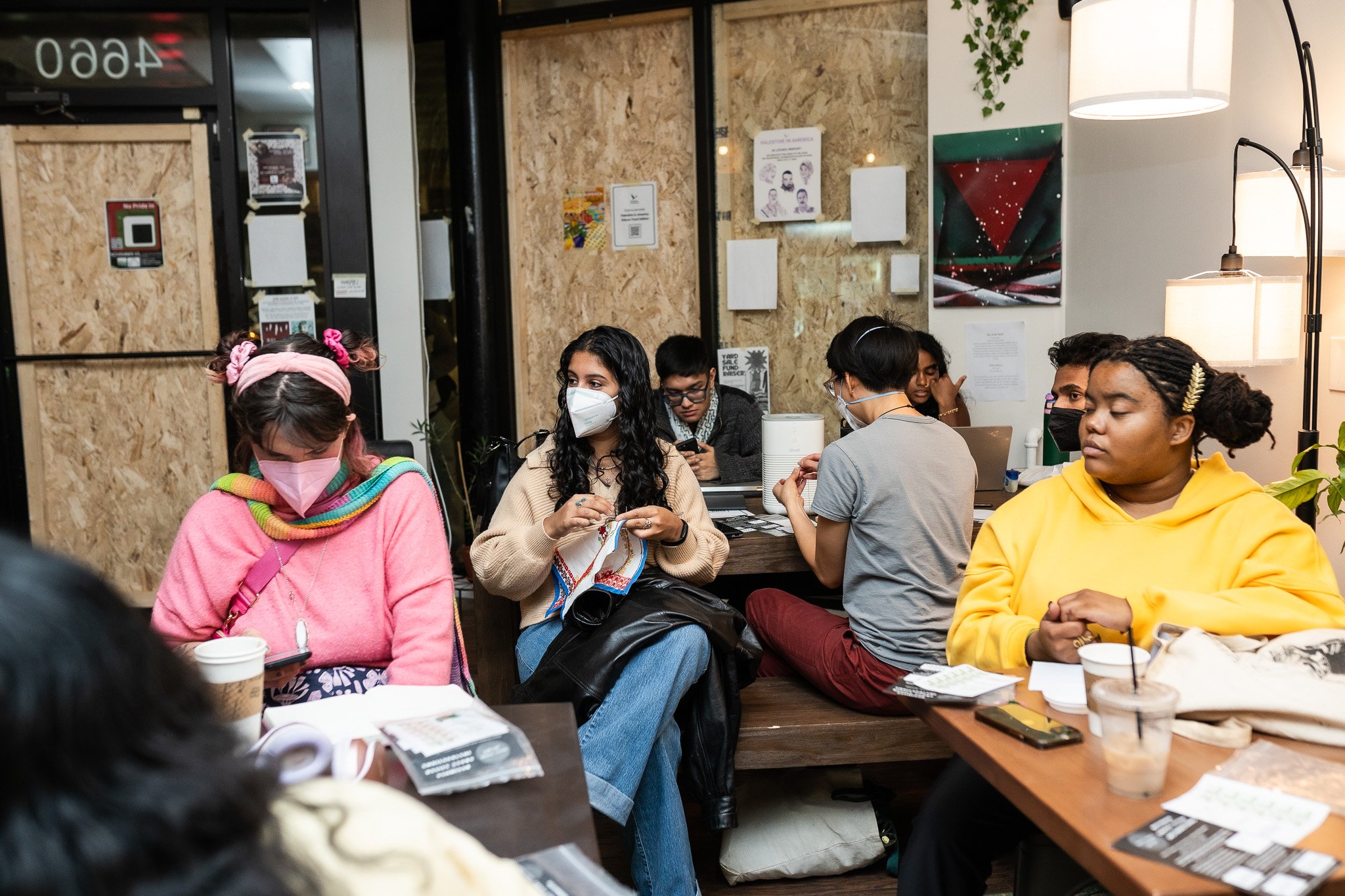
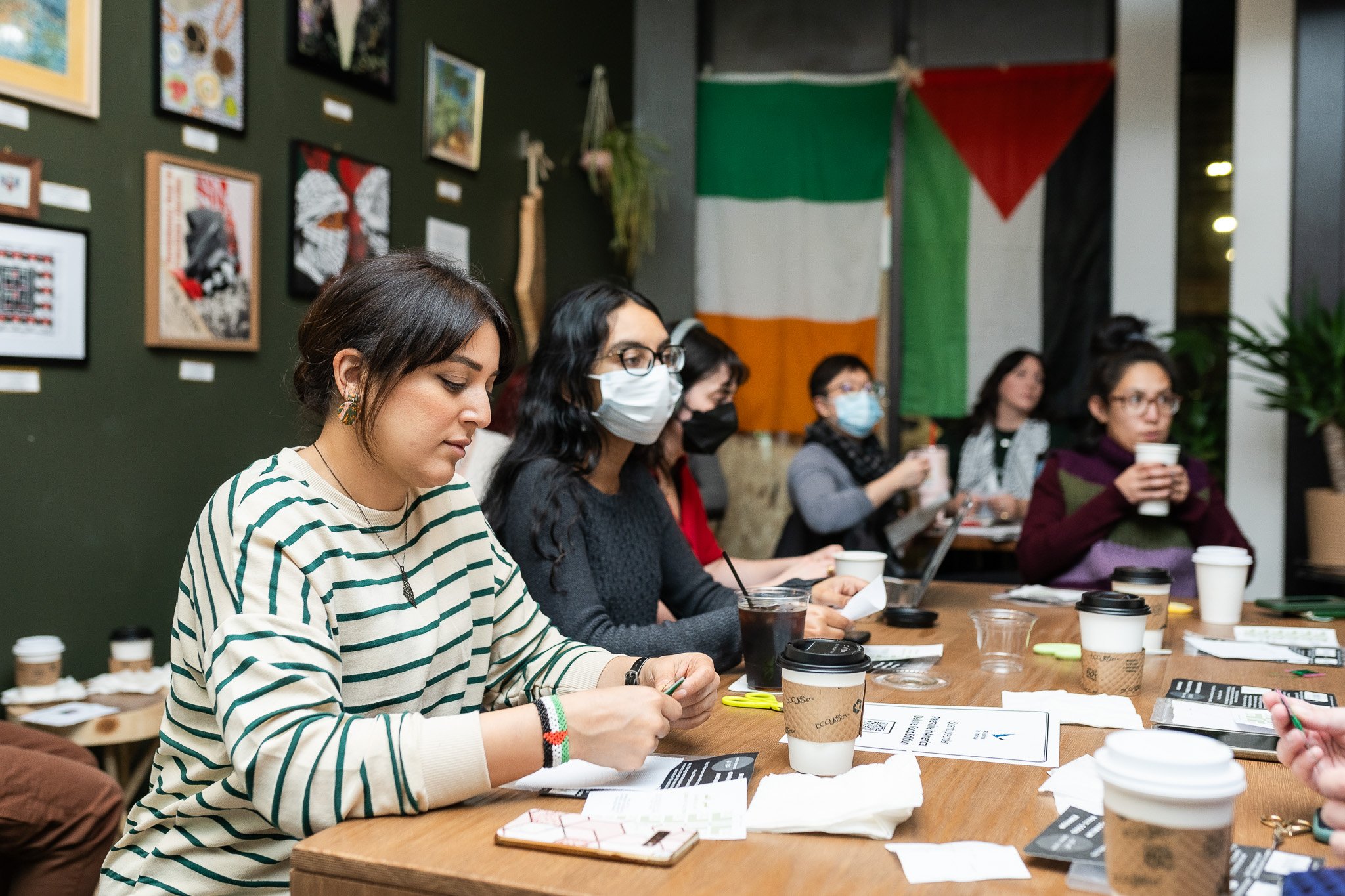
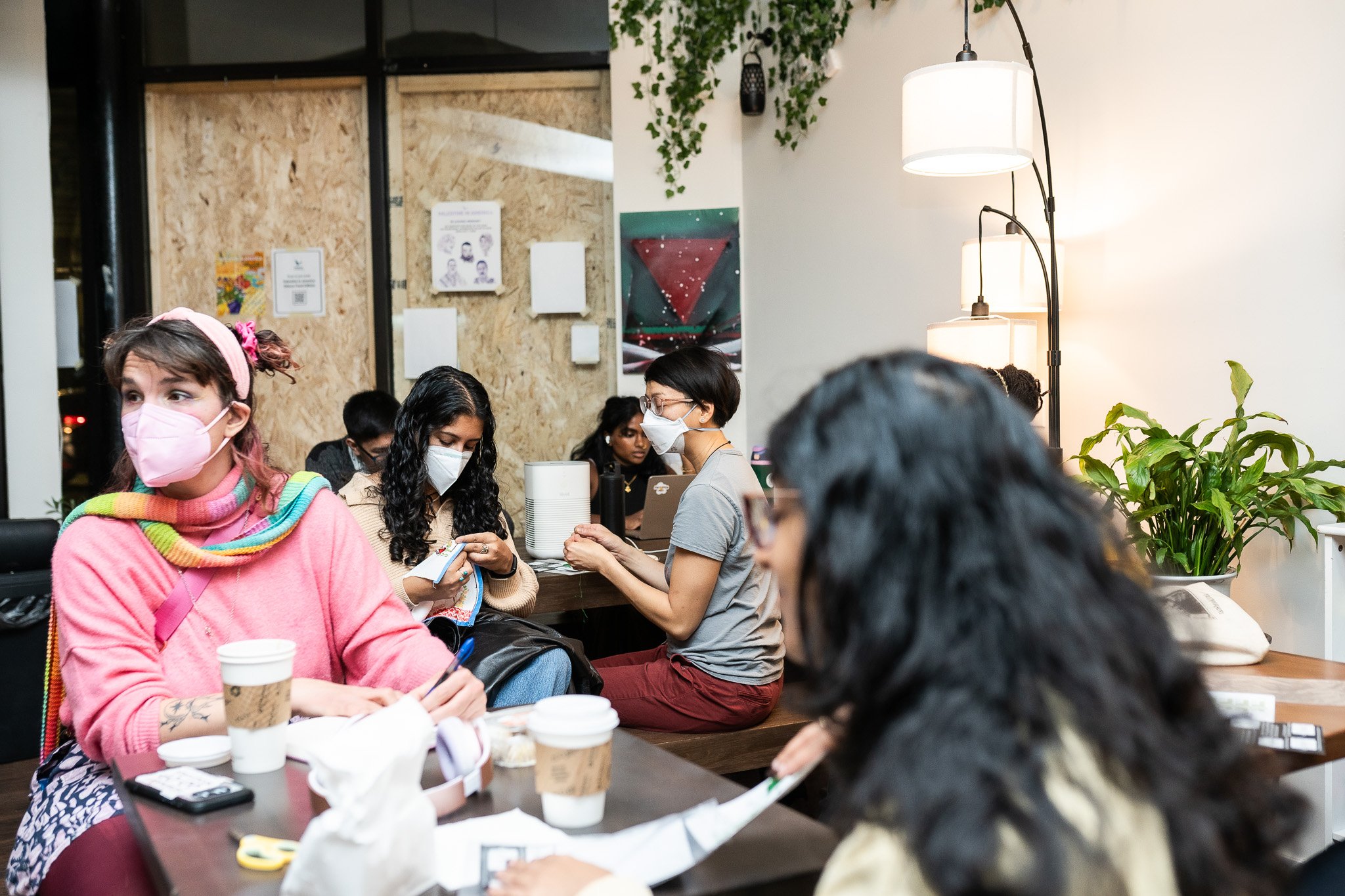
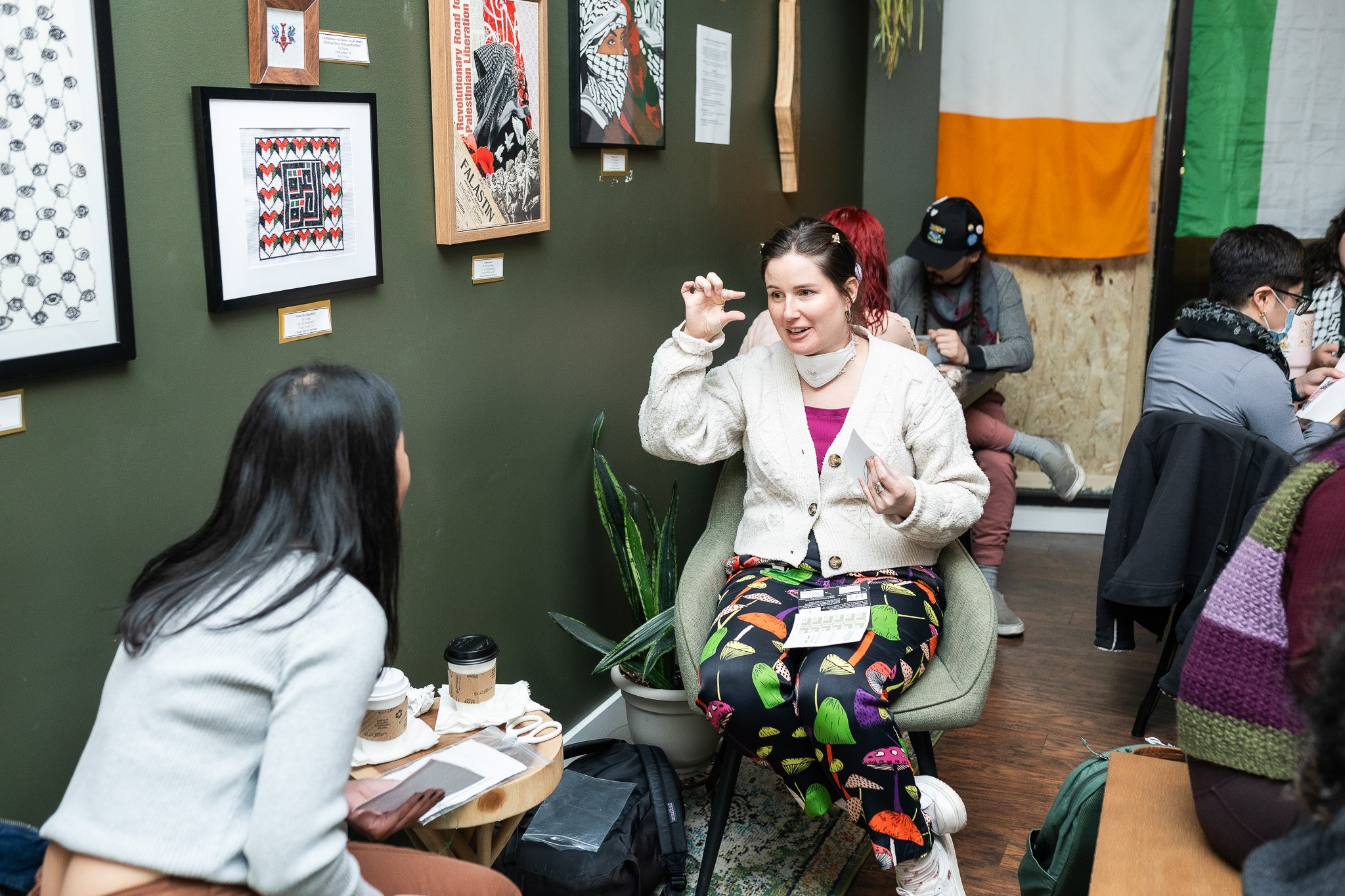
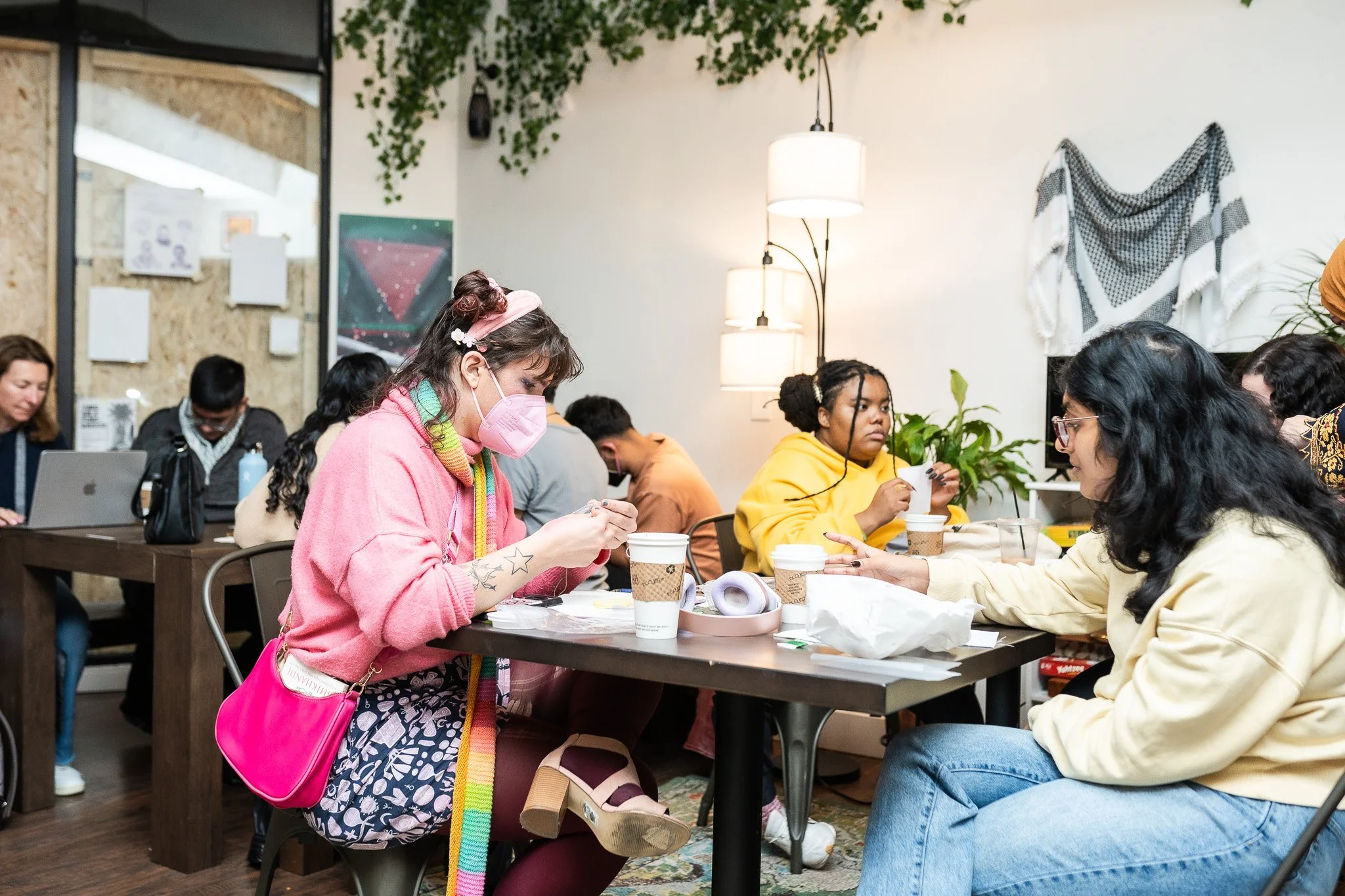
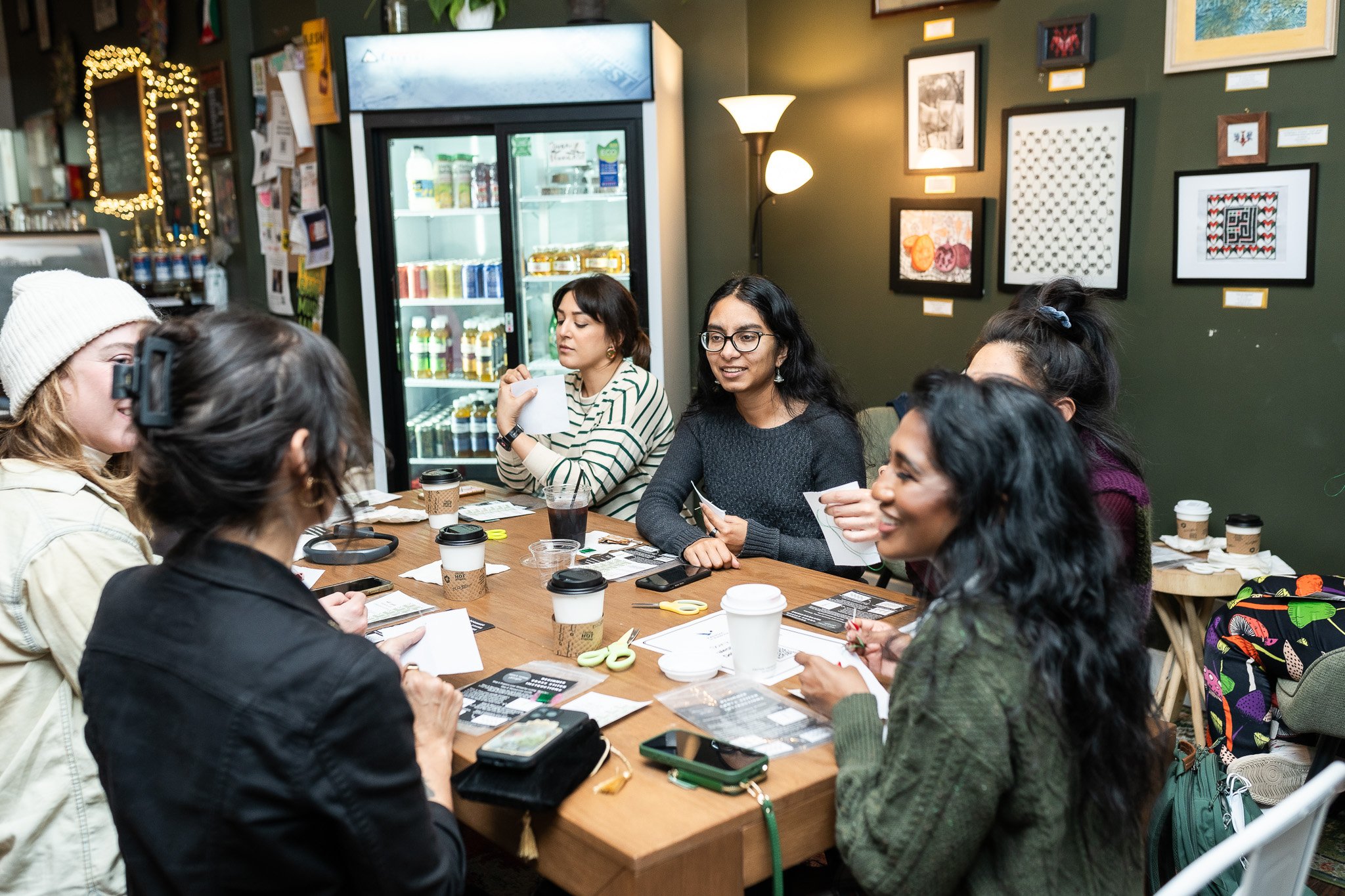
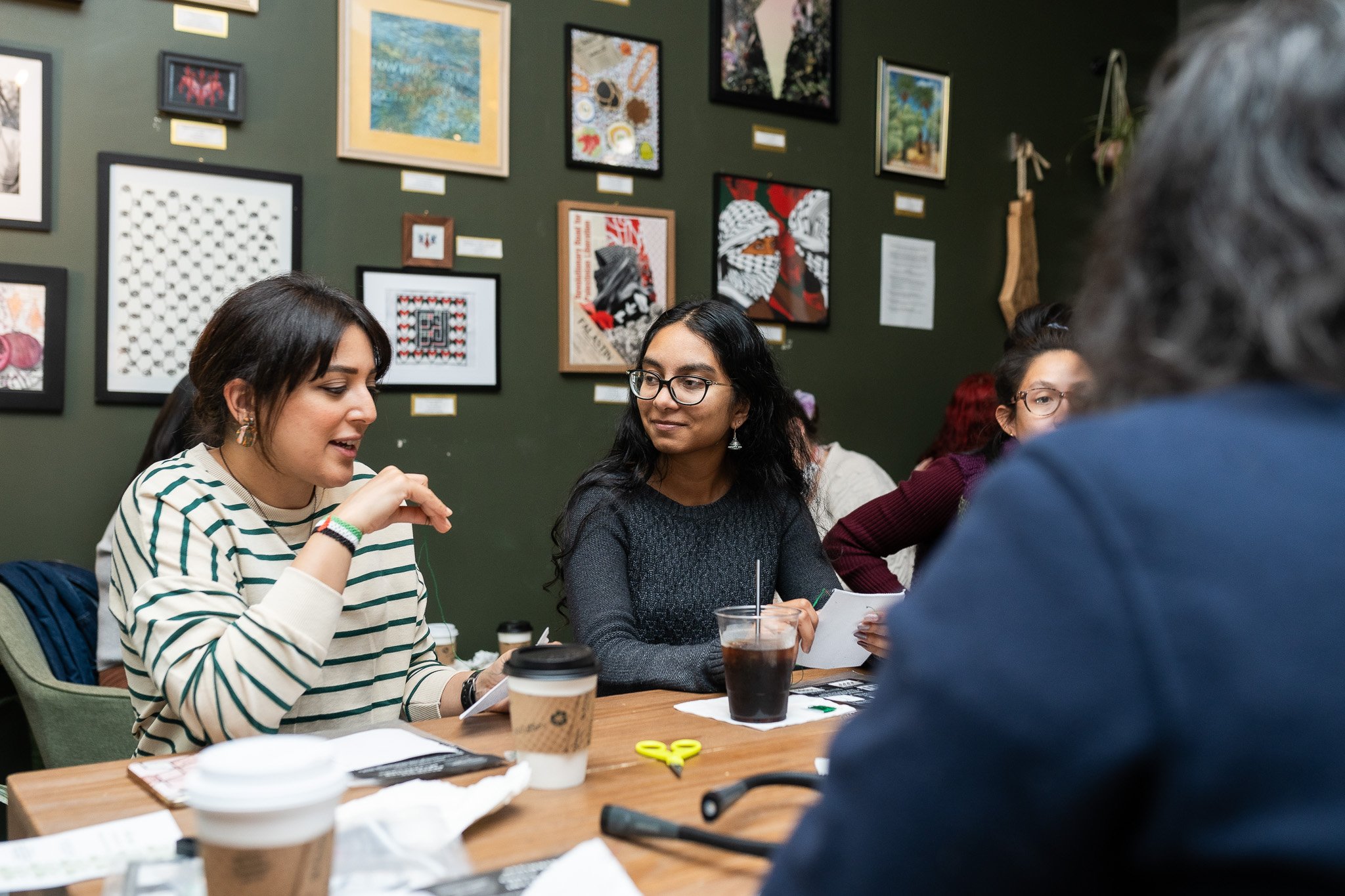
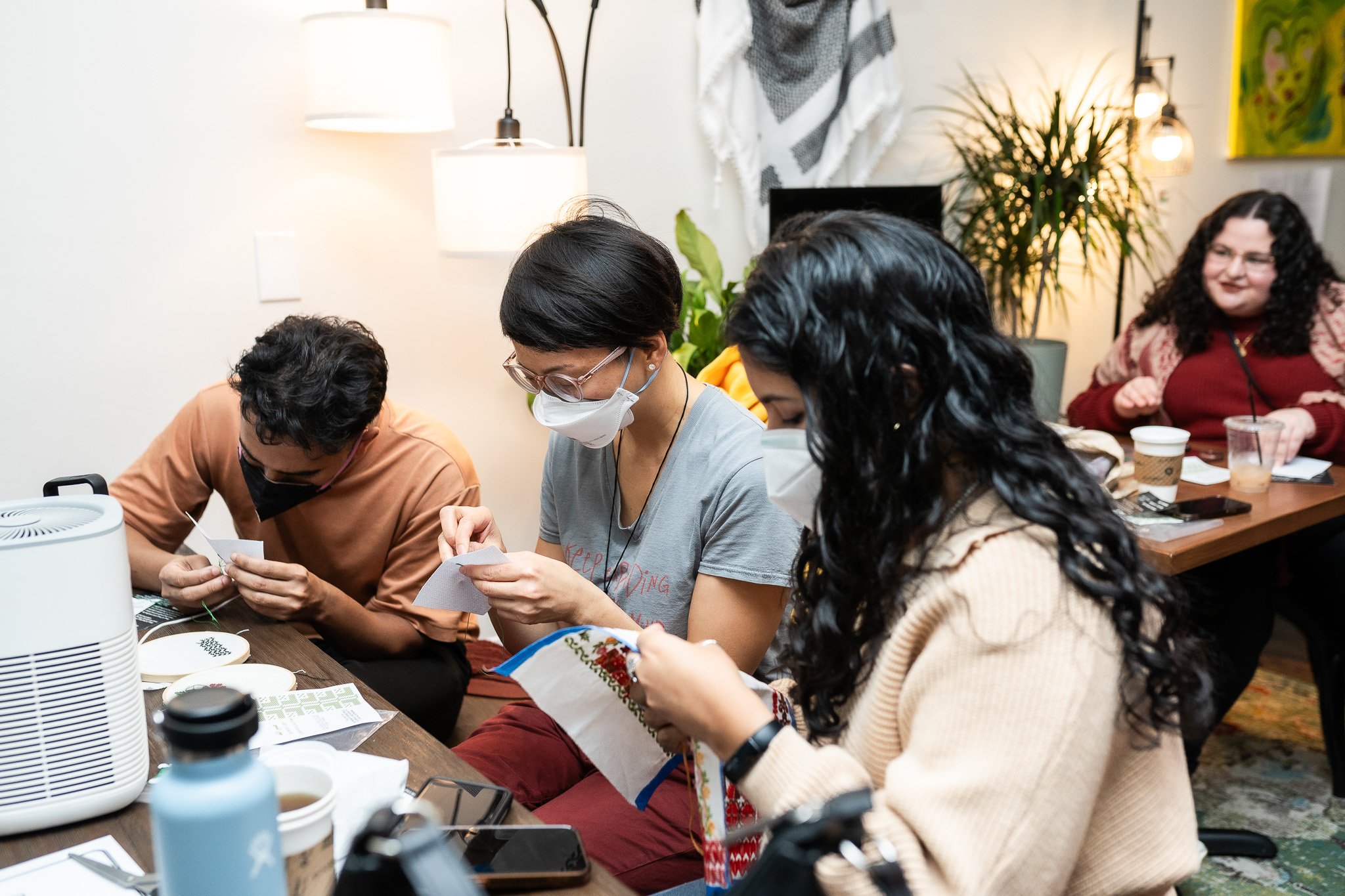
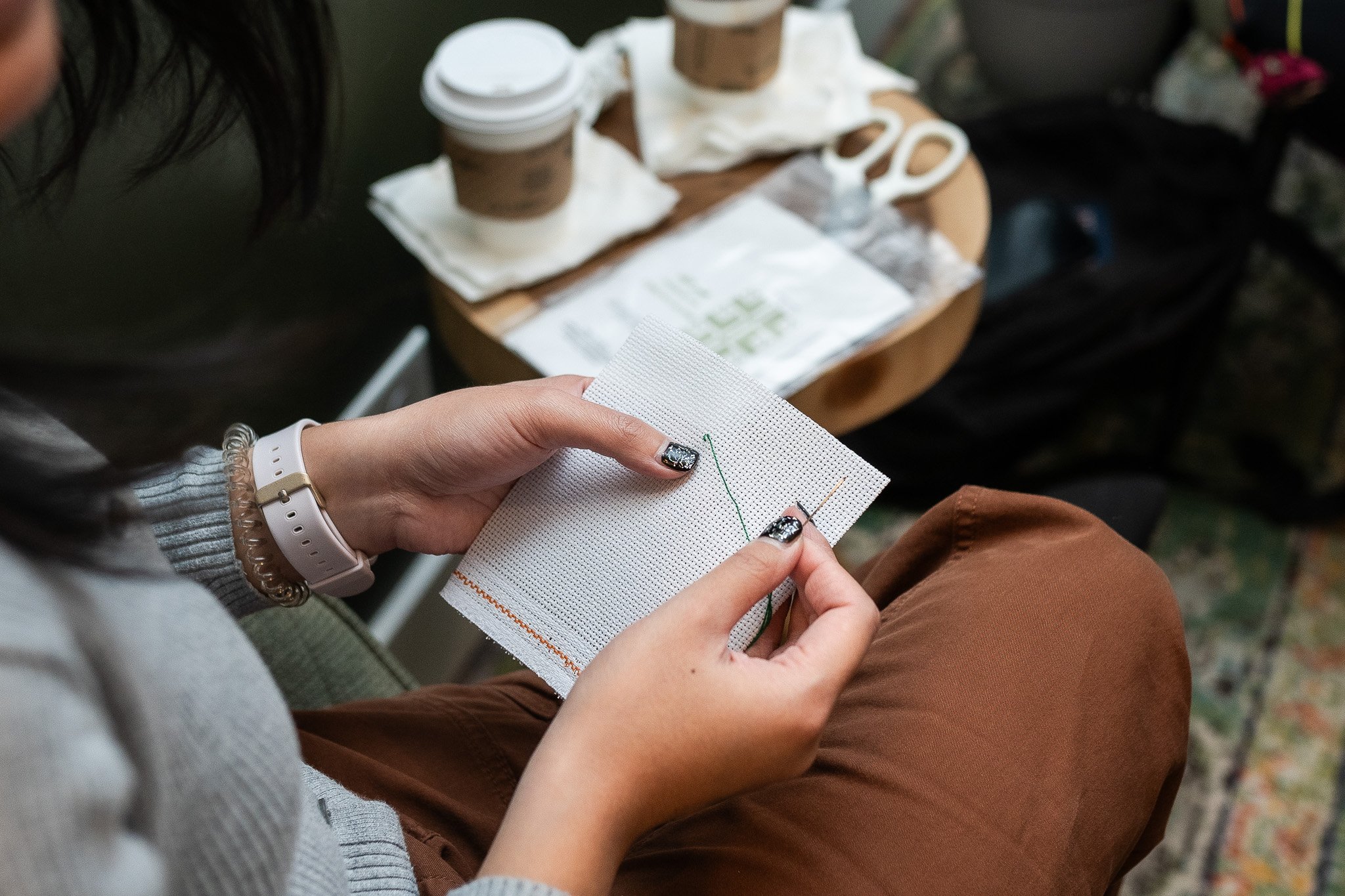

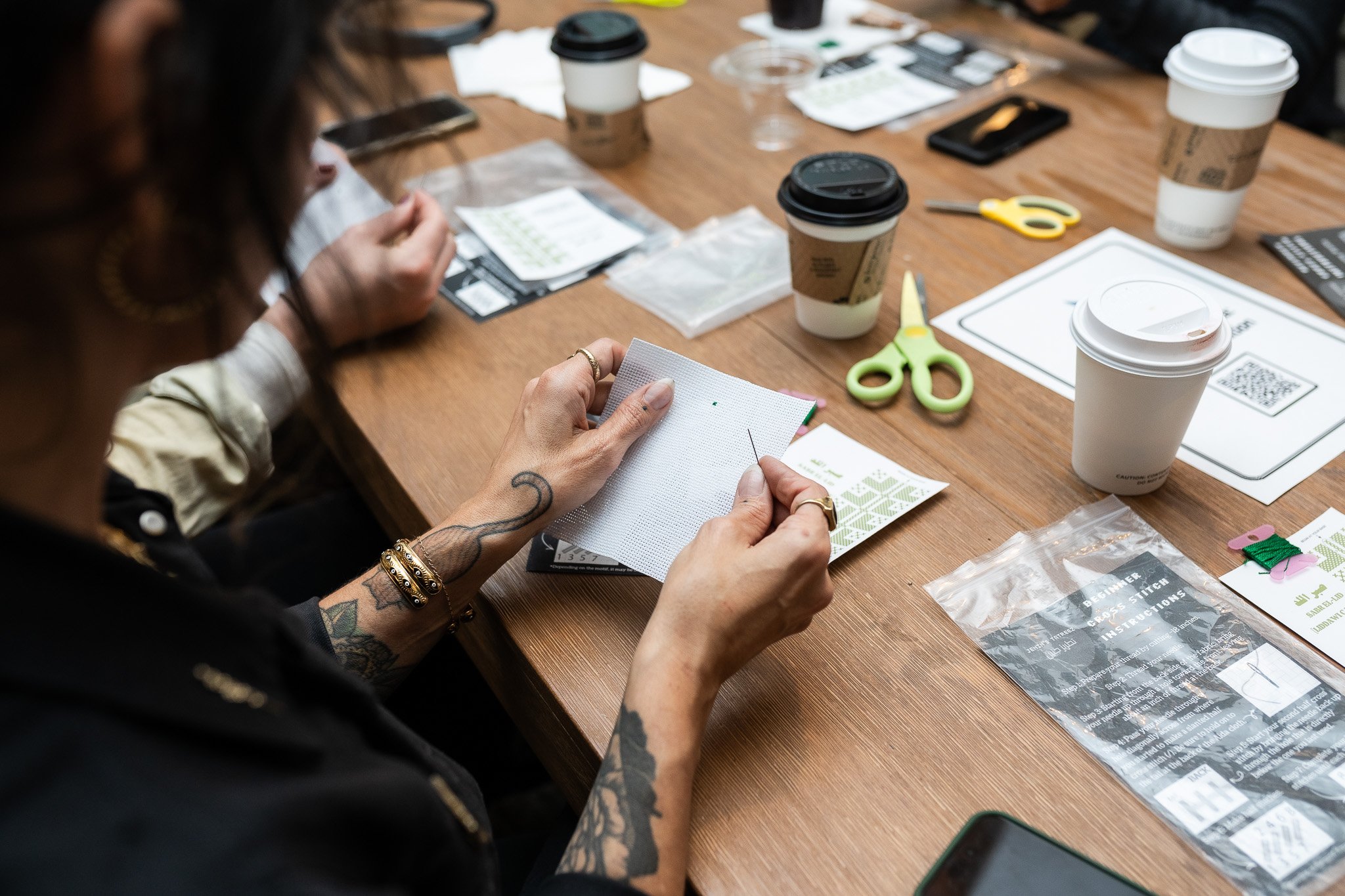
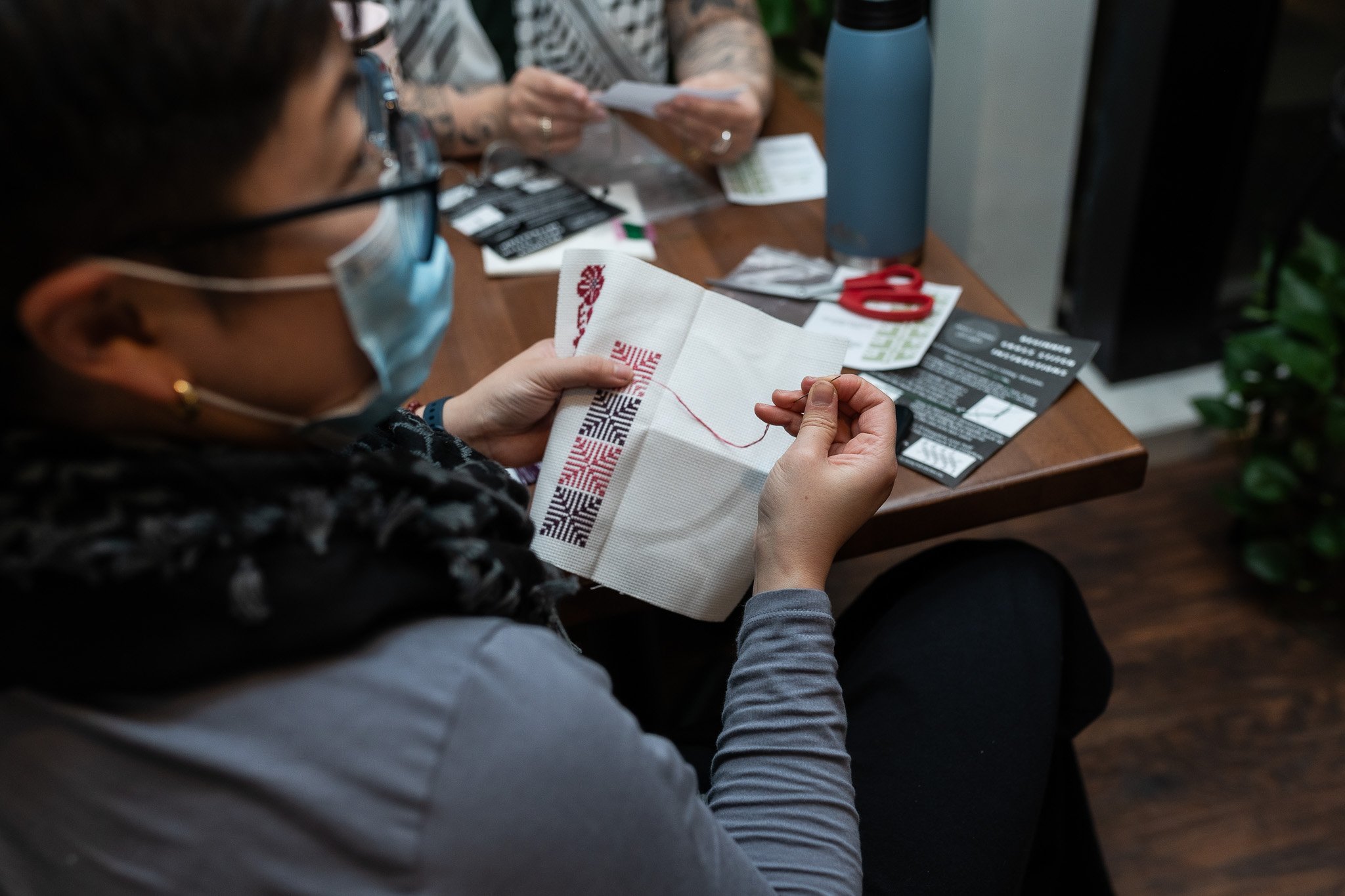
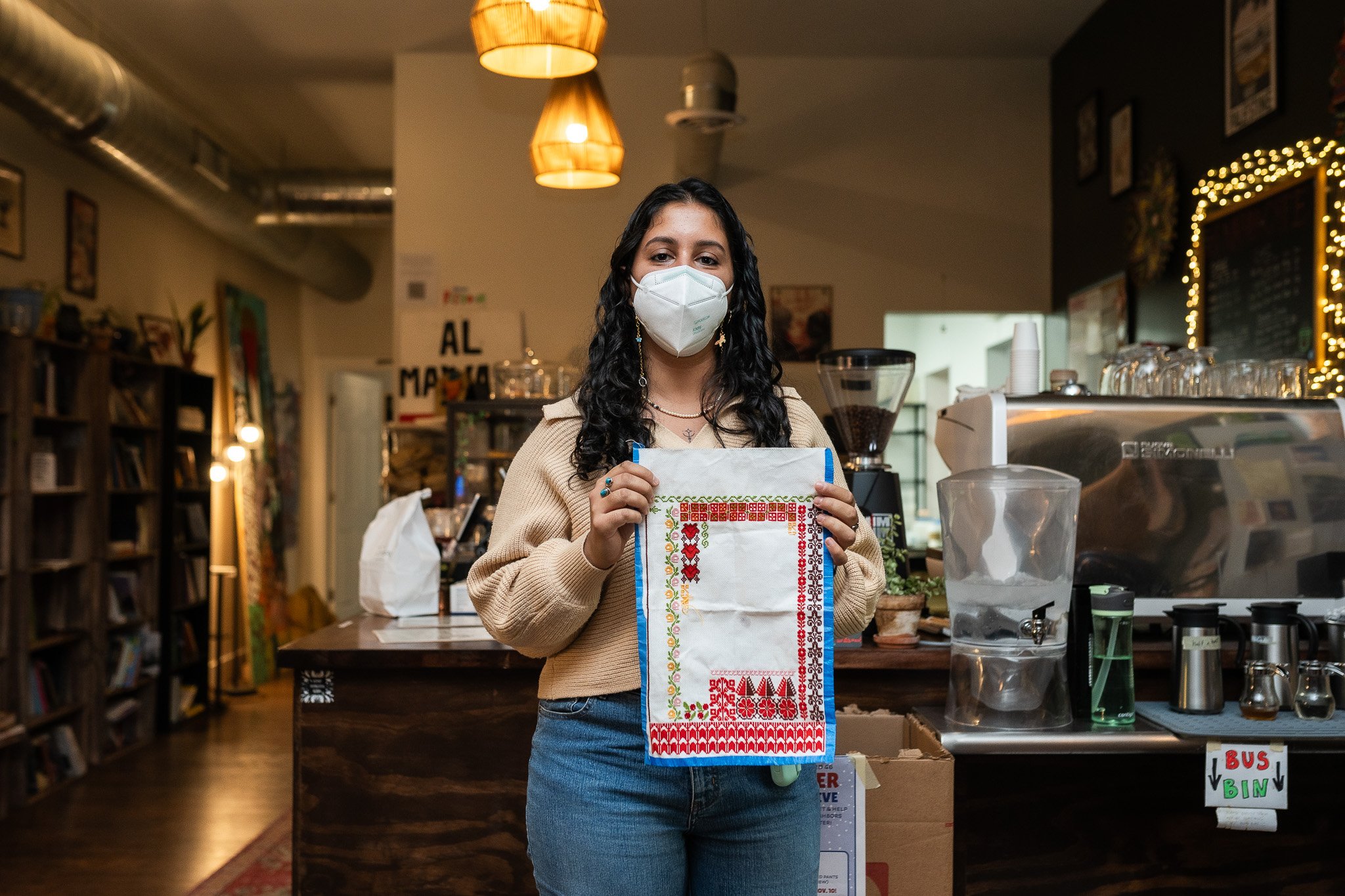
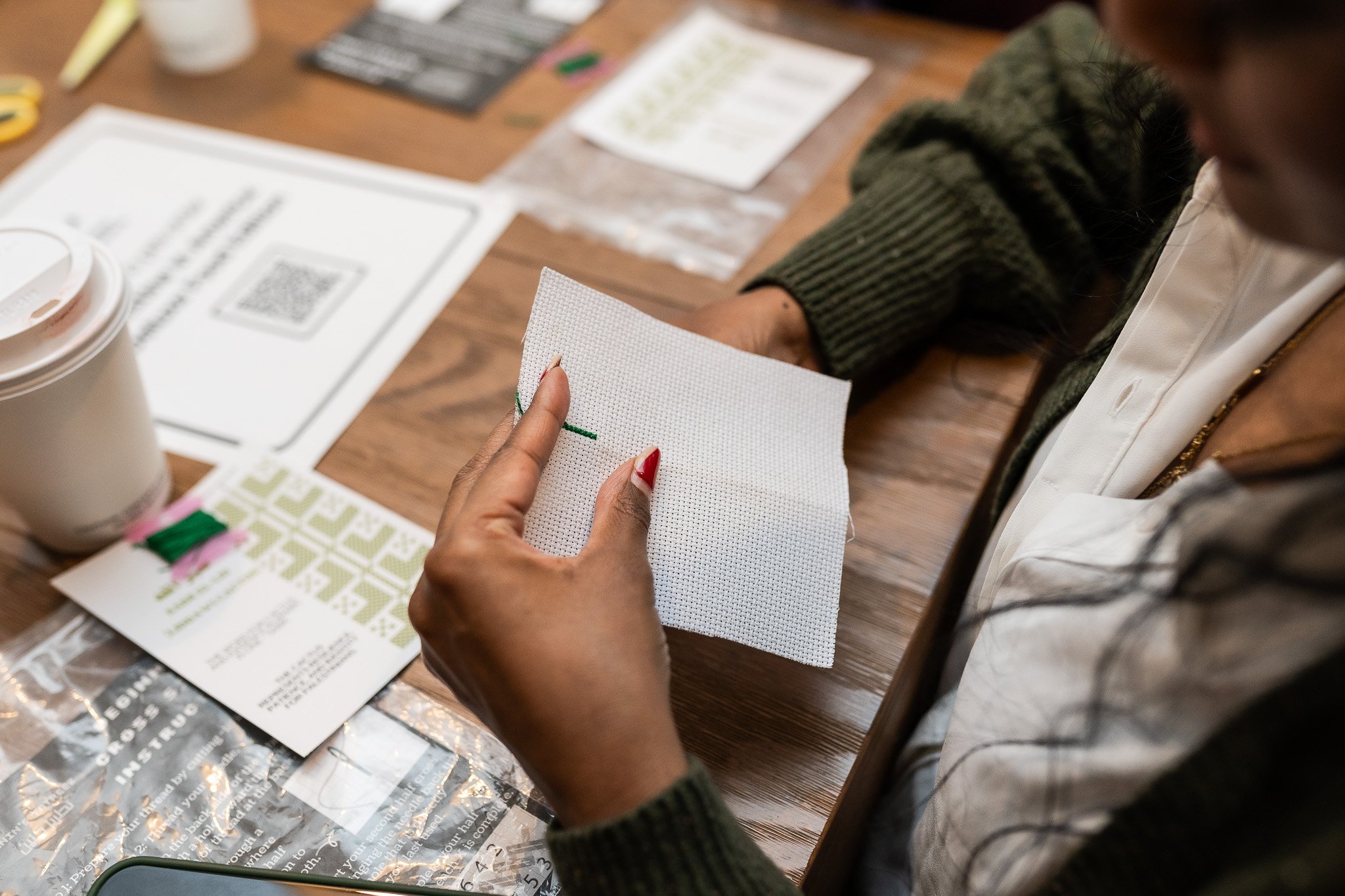
Photos by Jordan Esparza-Kelley



